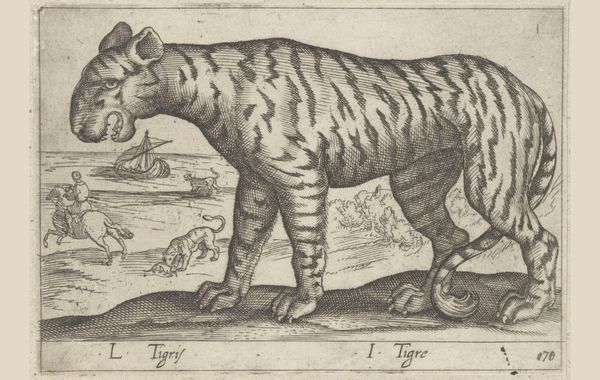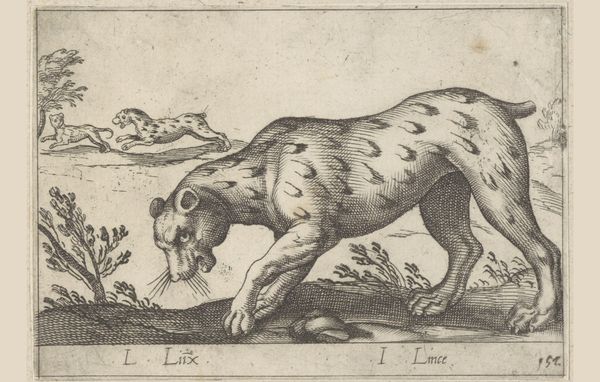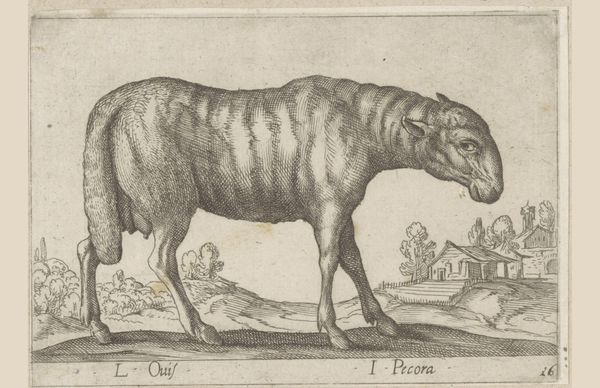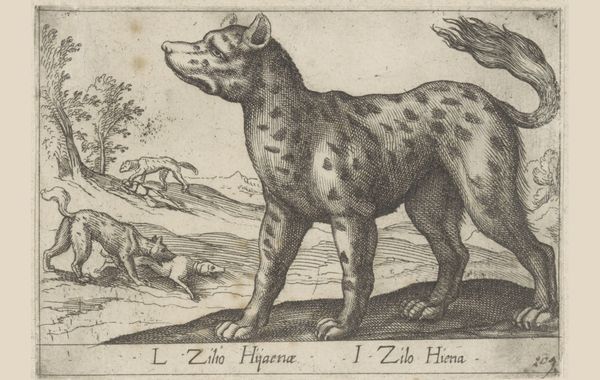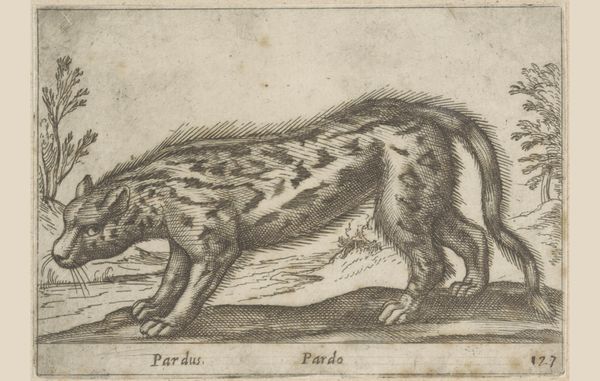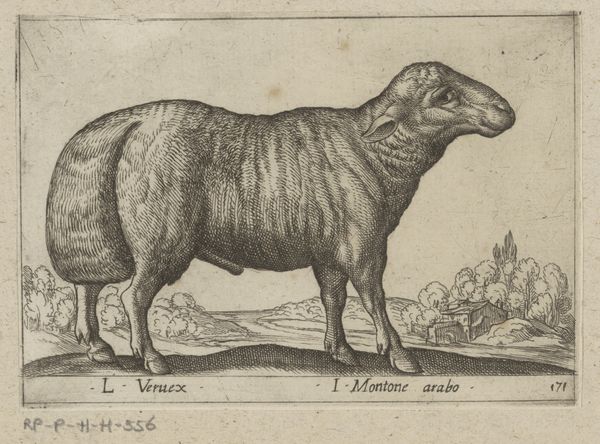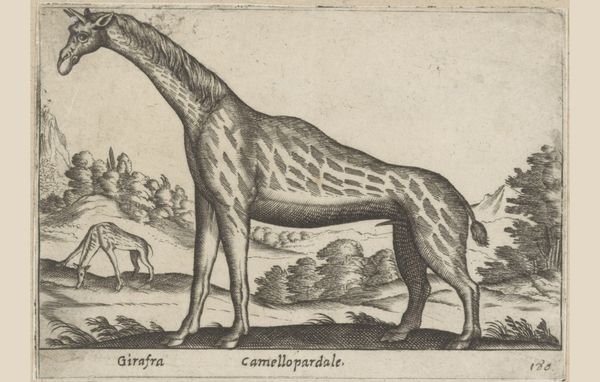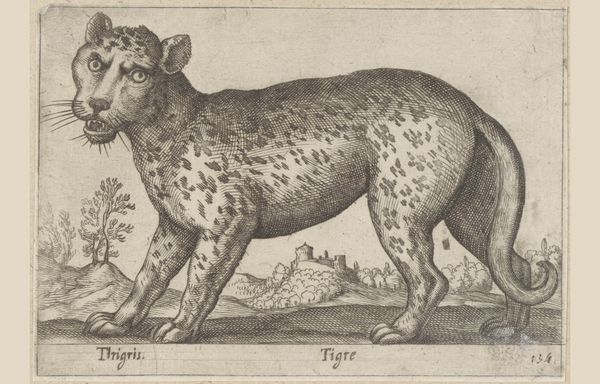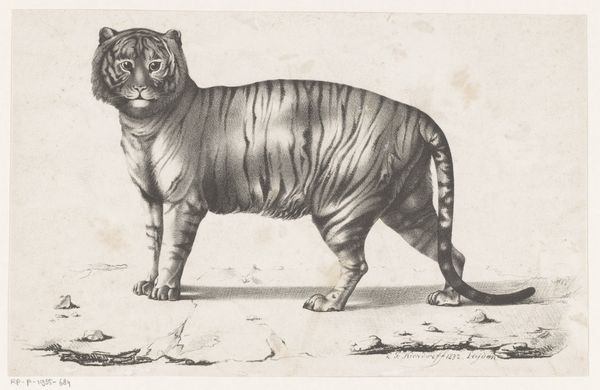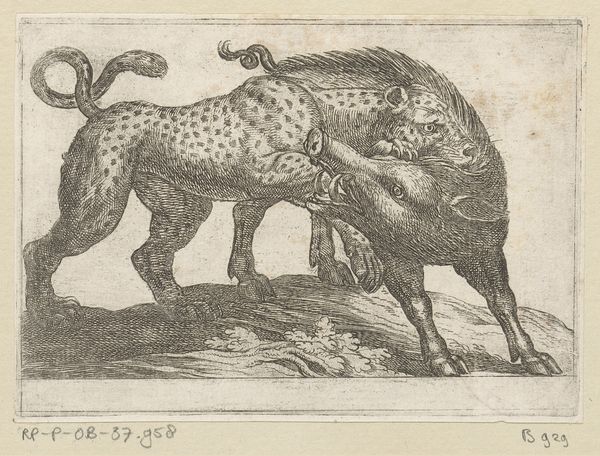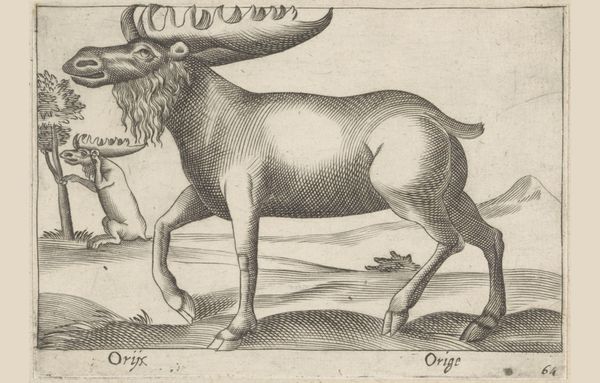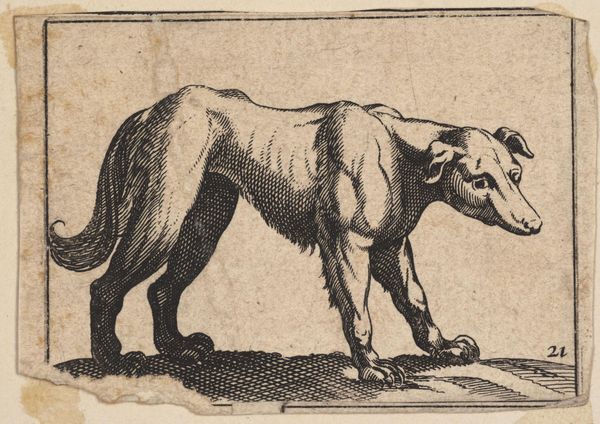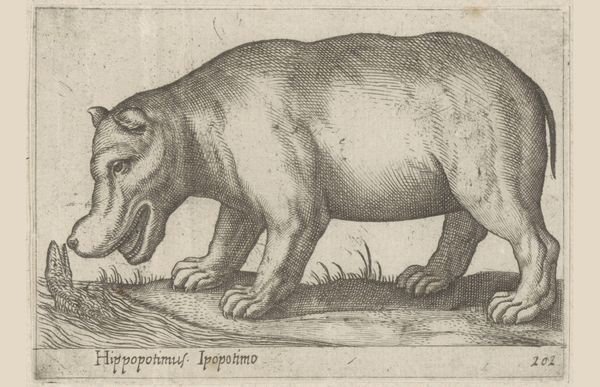
print, engraving
#
animal
# print
#
old engraving style
#
figuration
#
line
#
history-painting
#
engraving
#
realism
Dimensions: height 95 mm, width 137 mm
Copyright: Rijks Museum: Open Domain
Antonio Tempesta made this engraving of a Civet Cat, or ‘Gatto Zibetto’ as it says in Italian, probably around the turn of the 17th century. At this time, the print market was booming across Europe. Artists like Tempesta fed a growing appetite for images of all kinds, from biblical scenes to battles, and from maps to natural history illustrations. It’s worth remembering that before photography, printed images were vital for circulating information. But they also had a social function, providing a means through which people could debate the issues of the day, express their opinions, and explore different perspectives. This image reflects a growing interest in exotic animals, fuelled by the expansion of global trade and exploration. The Civet Cat, native to Africa and Asia, would have been a rare and intriguing sight for most Europeans. How accurate a representation is this? Well, by looking at zoological texts from the period, we can learn a lot about how animals like this were perceived and understood. We can better understand the politics of imagery.
Comments
No comments
Be the first to comment and join the conversation on the ultimate creative platform.
